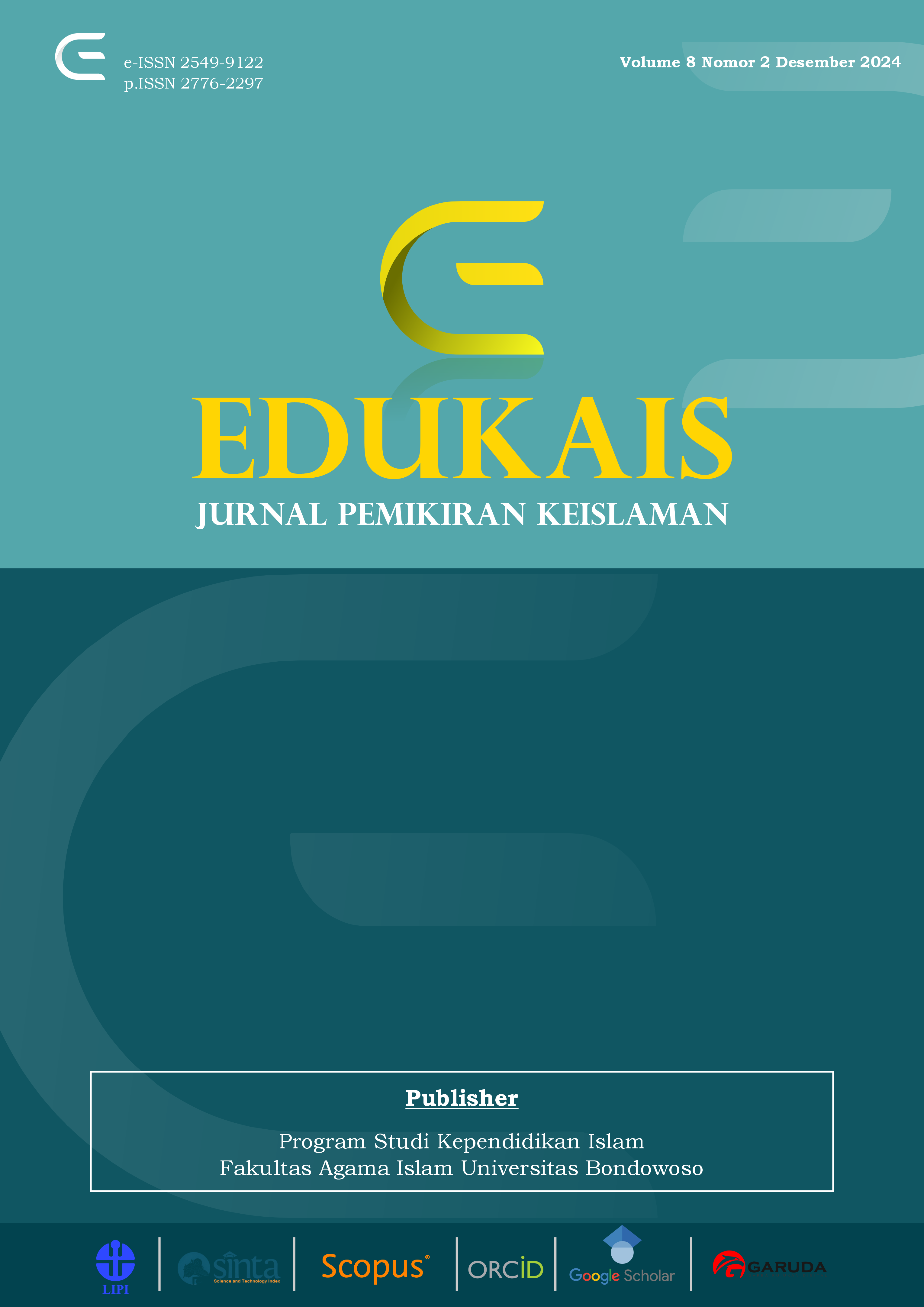Konsep Supervisi Klinis Kolaboratif dalam Perspektif Kajian Islam untuk Peningkatan Profesionalisme Guru di Era Revolusi Industri 4.0
DOI:
https://doi.org/10.61595/edukais.2024.8.2.155-169Keywords:
Collaborative Clinical Supervision, Teacher Professionalism, Madrasah, Fourth Industrial RevolutionAbstract
This study aims to explore the implementation of collaborative clinical supervision as a strategy to enhance teacher professionalism in madrasahs in the era of the Fourth Industrial Revolution. Collaborative clinical supervision is seen as an approach that can help teachers develop pedagogical and technological skills to improve teaching quality, while also enhancing classroom management. In the context of madrasahs, which have unique challenges and characteristics, this approach focuses on fostering more intensive interaction between teachers and supervisors through observation, reflection, and constructive feedback. This research employs a qualitative approach using a case study method at MTs Negeri 1 Paser. Data were collected through in-depth interviews, direct observations, and documentation related to the implementation of clinical supervision. The results indicate that collaborative clinical supervision significantly contributes to improving teachers' competencies, both in terms of pedagogical skills and their ability to use technology to support more effective and inclusive learning processes. However, challenges related to limited time, resources, and supervisors' understanding of effective clinical supervision techniques were identified. Therefore, this study suggests the need for further training for supervisors and increased collaboration among stakeholders to maximize the benefits of clinical supervision in madrasahs.
References
Anderson, R., & Smith, K. (2019). Enhancing collaborative teaching through clinical supervision. Journal of Educational Leadership, 45(2), 58-72.
Blanchard, M., & Ainsworth, M. (2019). Reflective practices in clinical supervision: A guide for teachers. Educational Journal of Practice, 35(4), 15-22.
Blumberg, A. (1974). Clinical supervision: A model for the profession. Educational Leadership, 32(2), 168-172.
Braun, V., & Clarke, V. (2006). Using thematic analysis in psychology. Qualitative Research in Psychology, 3(2), 77-101. https://doi.org/10.1191/1478088706qp063oa
Burns, D., & Brody, L. (2020). Overcoming barriers to effective clinical supervision in schools. Journal of Educational Policy, 18(3), 102-118.
Crawford, J., & Grace, D. (2021). Building effective teacher-supervisor relationships: A collaborative approach. Teaching and Teacher Education, 64, 23-35.
Dempster, N., & Seligman, S. (2019). The role of technology in classroom management. International Journal of Education, 35(5), 345-360.
Glickman, C. D., Gordon, S. P., & Ross-Gordon, J. M. (2018). Supervision and instructional leadership: A developmental approach (10th ed.). Pearson Education.
Guskey, T. R. (2021). Evaluating professional development: The role of clinical supervision. Educational Evaluation and Policy Analysis, 43(3), 430-448.
Hargreaves, A., & Fullan, M. (2021). Professional development in the context of clinical supervision: Emerging trends and challenges. Teaching and Teacher Education, 99, 103279.
Harris, A., & Jones, M. (2019). Professional learning communities and clinical supervision: Improving teachers’ practice. Journal of Educational Change, 20(1), 1-23.
Kunter, M., & Voss, T. (2013). The influence of professional development on teaching skills: A meta-analysis. Teaching and Teacher Education, 34, 19-32. https://doi.org/10.1016/j.tate.2013.01.005
Lambert, M. D., & Sweeny, J. M. (2020). Clinical supervision models in contemporary education: A review. International Journal of Educational Management, 34(4), 758-773.
Lunenburg, F. C., & Irby, B. J. (2009). Principles of best practice in school leadership and supervision. Thomson.
McKinney, S., & Lawrence, M. (2020). Collaborative approaches to clinical supervision: Enhancing teacher development. International Journal of Teacher Leadership, 14(2), 114-127.
Miller, P., & Wilmot, K. (2018). Teacher reflection through clinical supervision: Enhancing self-awareness and practice. Teacher Development, 22(3), 353-367.
Ng, K., & Lim, T. (2021). Technology integration in teacher professional development: Impacts of clinical supervision. Educational Technology Research and Development, 69(4), 789-805.
Rivkin, S. G., Hanushek, E. A., & Kain, J. F. (2015). Teacher quality and student achievement: A review of state policy evidence. Educational Evaluation and Policy Analysis, 37(1), 85-110. https://doi.org/10.3102/0162373714558499
Stake, R. E. (1995). The art of case study research. Sage Publications.
Sundararajan, V. (2017). The Fourth Industrial Revolution: Opportunities and challenges for the future workforce. Business and Economics Journal, 8(1), 75-81. https://doi.org/10.4172/2151-6219.1000281
Vescio, V., Ross, D., & Adams, A. (2017). A review of research on the impact of professional learning communities on teaching practice and student learning. Teaching and Teacher Education, 64, 1-16. https://doi.org/10.1016/j.tate.2017.01.003
Zhao, Y. (2017). What works may hurt: Side effects in education. Corwin Press.


